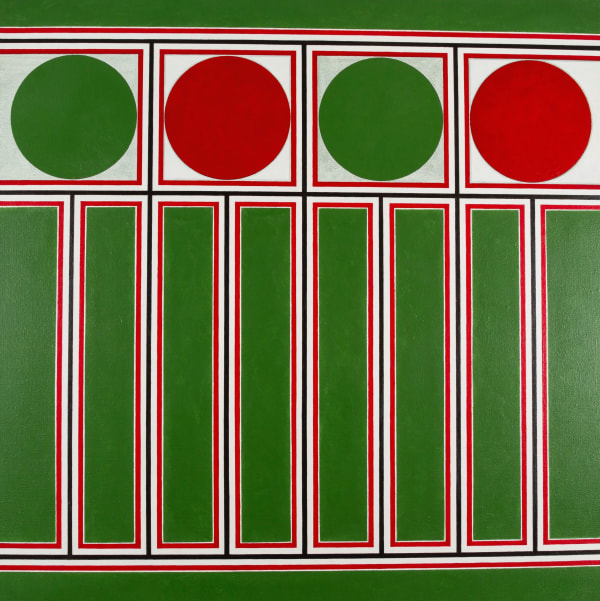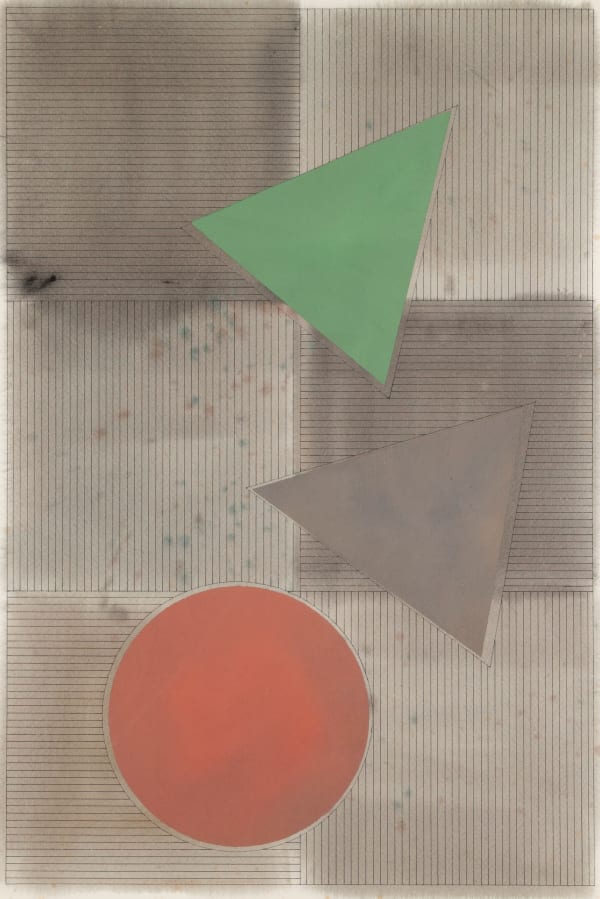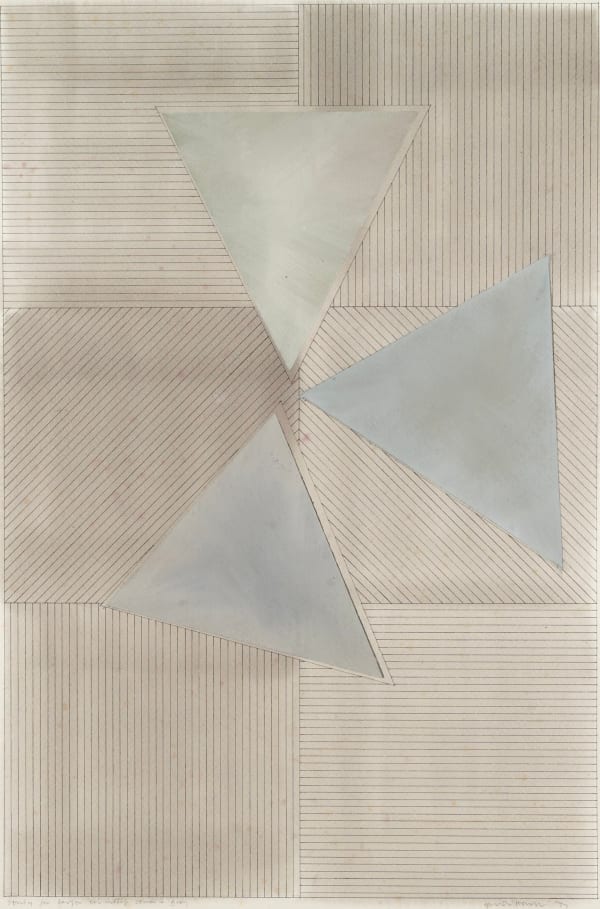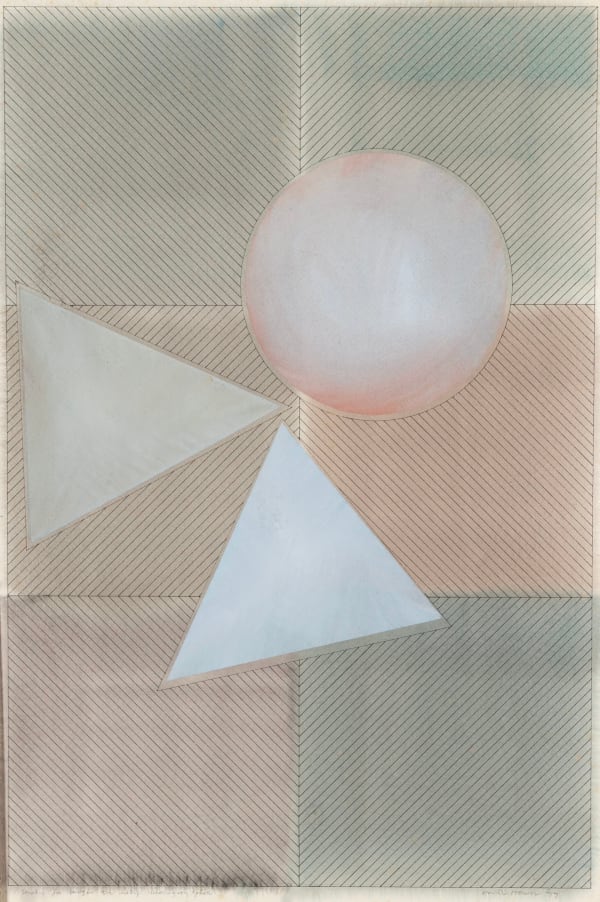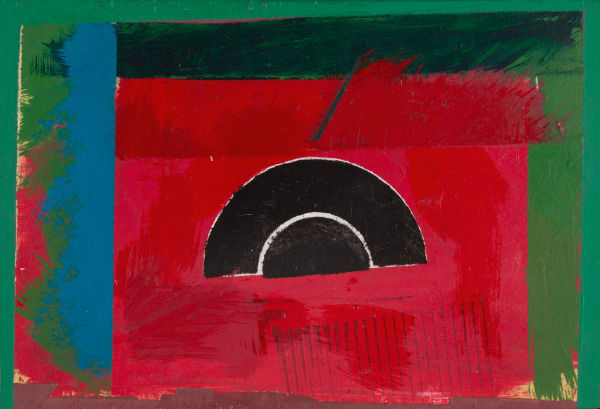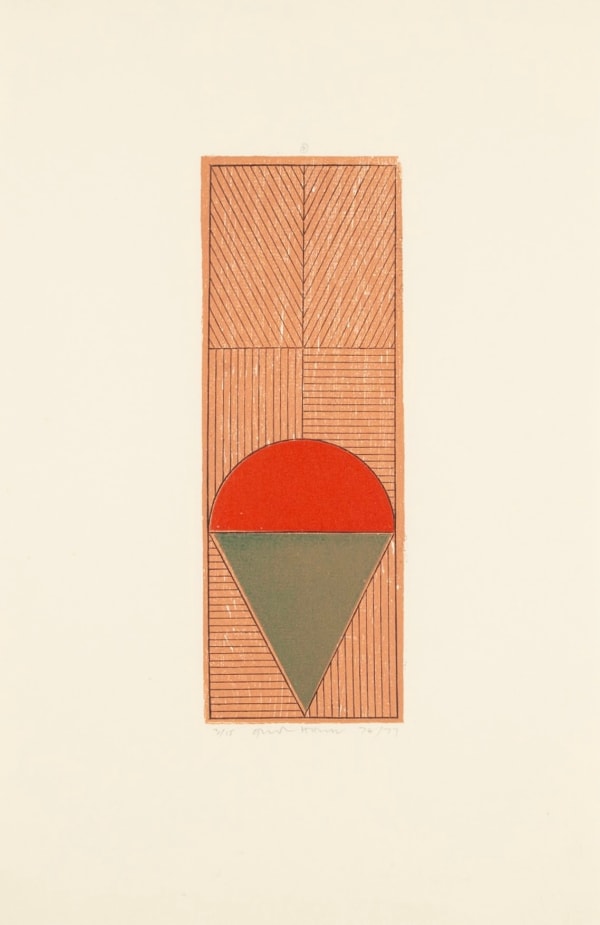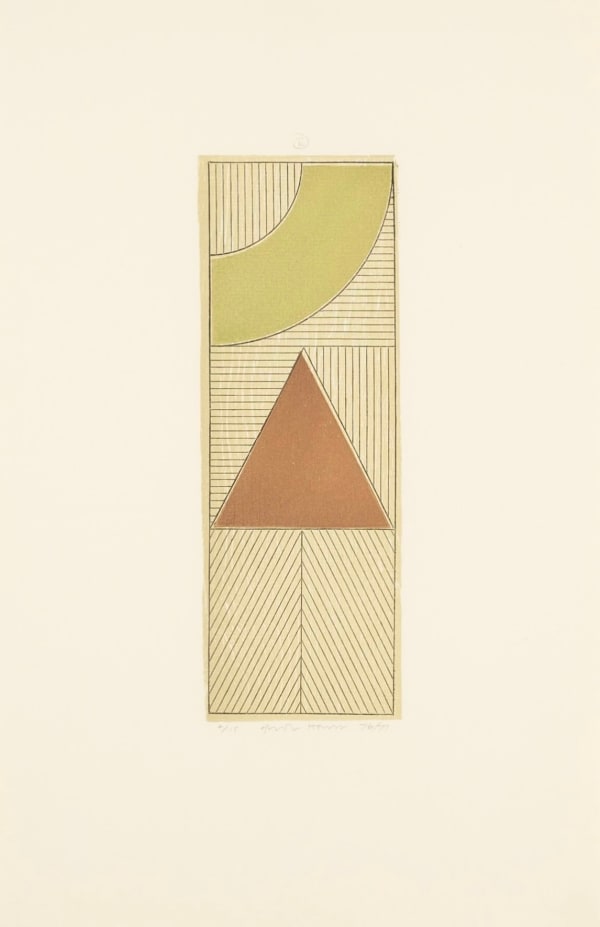Gordon House Art for Sale1932-2004
-
 Gordon HouseMitred Matrix (Red), 1968
Gordon HouseMitred Matrix (Red), 1968 -
 Gordon HouseBlue/Red Ornament Frieze II, 1976-1977
Gordon HouseBlue/Red Ornament Frieze II, 1976-1977 -
 Gordon HouseRed/Green Ornament Frieze I, 1976-1977
Gordon HouseRed/Green Ornament Frieze I, 1976-1977 -
 Gordon HouseDeltic, 1959
Gordon HouseDeltic, 1959 -
 Gordon HouseDouble Red Triangle, 1974
Gordon HouseDouble Red Triangle, 1974 -
 Gordon HouseUntitled, 2000, circa
Gordon HouseUntitled, 2000, circa -
 Gordon HouseScooped Palette, 2002, circa£ 7,750.00
Gordon HouseScooped Palette, 2002, circa£ 7,750.00 -
 Gordon HouseUntitled, 2002, circa£ 7,750.00
Gordon HouseUntitled, 2002, circa£ 7,750.00 -
 Gordon HouseRed/Green, from Study for Larger Tri Motif Series, 1977, circa£ 5,500.00
Gordon HouseRed/Green, from Study for Larger Tri Motif Series, 1977, circa£ 5,500.00 -
 Gordon HouseGrey, from Study for Larger Tri Motif Series, 1977, circa£ 5,500.00
Gordon HouseGrey, from Study for Larger Tri Motif Series, 1977, circa£ 5,500.00 -
 Gordon HouseOchre, from Study for Larger Tri Motif Series, 1977, circa£ 5,500.00
Gordon HouseOchre, from Study for Larger Tri Motif Series, 1977, circa£ 5,500.00 -
 Gordon HouseGrey/Pink, from Study for Larger Tri Motif Series, 1977£ 5,500.00
Gordon HouseGrey/Pink, from Study for Larger Tri Motif Series, 1977£ 5,500.00 -
 Gordon HouseArc in Register, 1970£ 5,500.00
Gordon HouseArc in Register, 1970£ 5,500.00 -
 Gordon HouseInner and Outer Arc, 1970£ 5,500.00
Gordon HouseInner and Outer Arc, 1970£ 5,500.00 -
 Gordon HouseIII, from Tri Motifs, 1977, circa£ 4,800.00
Gordon HouseIII, from Tri Motifs, 1977, circa£ 4,800.00 -
 Gordon HouseUntitled, 2000, circa£ 4,500.00
Gordon HouseUntitled, 2000, circa£ 4,500.00 -
 Gordon HouseThe Dragon's Wing, 1990£ 4,500.00
Gordon HouseThe Dragon's Wing, 1990£ 4,500.00 -
 Gordon HouseHighway, 1999£ 4,250.00
Gordon HouseHighway, 1999£ 4,250.00 -
 Gordon HouseCuriosities, from the After Powhatan Suite, 1992£ 3,950.00
Gordon HouseCuriosities, from the After Powhatan Suite, 1992£ 3,950.00 -
 Gordon HouseRitual Red, from the After Powhatan Suite, 1992£ 3,950.00
Gordon HouseRitual Red, from the After Powhatan Suite, 1992£ 3,950.00 -
 Gordon HouseBlue Buckler, from the After Powhatan Suite, 1992£ 3,950.00
Gordon HouseBlue Buckler, from the After Powhatan Suite, 1992£ 3,950.00 -
 Gordon HouseRed Tracery, from the After Powhatan Suite, 1992£ 3,950.00
Gordon HouseRed Tracery, from the After Powhatan Suite, 1992£ 3,950.00 -
 Gordon HouseLate Path II (Antibes), 2000, circa£ 3,500.00
Gordon HouseLate Path II (Antibes), 2000, circa£ 3,500.00 -
 Gordon HouseHornsey, 1957£ 2,250.00
Gordon HouseHornsey, 1957£ 2,250.00 -
 Gordon HouseSeries Tri (D) Small Wood, 1976-1977£ 1,150.00
Gordon HouseSeries Tri (D) Small Wood, 1976-1977£ 1,150.00 -
 Gordon HouseSeries Tri (U) Small Wood, 1976-1977£ 1,150.00
Gordon HouseSeries Tri (U) Small Wood, 1976-1977£ 1,150.00 -
 Gordon HouseSeries Tri (K) Small Wood, 1976-1977£ 1,150.00
Gordon HouseSeries Tri (K) Small Wood, 1976-1977£ 1,150.00 -
 Gordon HouseSeries Tri (F) Small Wood, 1976-1977£ 1,150.00
Gordon HouseSeries Tri (F) Small Wood, 1976-1977£ 1,150.00 -
 Gordon HouseArchitecture, from the FLW/ Highbury Portfolio Suite, 1987£ 950.00
Gordon HouseArchitecture, from the FLW/ Highbury Portfolio Suite, 1987£ 950.00 -
 Gordon HouseThe Project, from the FLW/ Highbury Portfolio Suite, 1987£ 950.00
Gordon HouseThe Project, from the FLW/ Highbury Portfolio Suite, 1987£ 950.00 -
 Gordon HouseSite Visit, from the FLW/ Highbury Portfolio Suite, 1987£ 850.00
Gordon HouseSite Visit, from the FLW/ Highbury Portfolio Suite, 1987£ 850.00 -
 Gordon HouseWorking, from the FLW/ Highbury Portfolio Suite, 1987£ 850.00
Gordon HouseWorking, from the FLW/ Highbury Portfolio Suite, 1987£ 850.00 -
 Gordon HouseStill Working, from the FLW/ Highbury Portfolio Suite, 1987£ 850.00
Gordon HouseStill Working, from the FLW/ Highbury Portfolio Suite, 1987£ 850.00 -
 Gordon HouseThe Idea, from the FLW/ Highbury Portfolio Suite, 1987£ 850.00
Gordon HouseThe Idea, from the FLW/ Highbury Portfolio Suite, 1987£ 850.00
Gordon House was born in 1932 in Pontardawe, South Wales. Early exposure to art on trips to the Glynn Vivian Art Gallery as a young boy inspired House towards creative endeavors and at the age of fourteen he was awarded a grant to enter art school which he accepted. From 1947 to 1950 he studied at Luton School of Art, Bedfordshire, and St. Albans School of Art, Hertfordshire. House's contemporaries included Richard Smith and John Plumb with whom he remained close. During the early fifties, after finishing art school, House began work as assistant to the ecclesiastical sculptor Theodore Kern. He also spent time at an advertising studio where he honed his burgeoning skills in typography and graphic design. In 1952 House was offered the position of designer for Imperial Chemical Industries Plastics Division where he stayed until 1959. This was followed by two years spent as graphic designer for the Kynoch Press in London. In 1961 House set out on his own as a self-employed designer and typographer. Initially this was supplemented by part-time teaching at art schools in and around London but by 1964 House was able to devote himself entirely to his design work which freed up valuable time to concentrate on his own artistic output in the studio.
In the late fifties, informed by the new art emerging from America and that of his contemporaries in England, House began to create large-scale abstract works which he was invited to show in 1959 at Dennis Bowen's legendary New Vision Centre in Marble Arch.
House was an active participant in the vibrant London art scene of the sixties, regularly attending lectures, exhibitions and discussions. In 1960 he exhibited in 'Situation' the key abstract exhibition of the decade held at the RBA Galleries. Other participating artists included Robyn Denny, Bernard and Harold Cohen, Gillian Ayres, John Hoyland, Richard Smith and William Turnbull among others. These artists, united by a common admiration for American Abstract Expressionism, were frustrated by the lack of exposure given to large-scale abstract works in commercial galleries so they organised their own exhibition. The name was derived from the participants' idea that an abstract painting that occupied the whole field of vision would involve the spectator in an 'event' or 'situation'. This exhibition was followed by 'New London Situation' in 1961 and a nationwide touring Arts Council presentation in recognition of the significance of the two earlier shows.
In 1961 House began producing his first prints at the Kelpra Studio, run by Chris and Rose Prater, where he made the earliest fine art screenprint ever to be produced in Britain. Artists such as Paolozzi and Hamilton followed in his footsteps and together they started a printmaking revolution in Britain. They cemented the medium of the screenprint in the world of fine art as opposed to the commercial sphere and secured the reputation of Kelpra in the process. Later, together with Cliff White, House set up the White Ink (Ltd.) print studio in London, where he produced etchings and wood engravings on a series of magnificent antique printing presses he had collected. White Ink soon gained a reputation for innovative and high quality printmaking, attracting artists such as R. B. Kitaj, Richard Smith, Joe Tilson, Sidney Nolan, Victor Pasmore, Eduardo Paolozzi, Bernard Cohen and Elisabeth Frink.
Printmaking was to remain a key part of House's oeuvre throughout the rest of his career, whether in the medium of screenprint, etching, woodcut, linocut or lithograph. In 1981 a retrospective exhibition of his graphic works opened at the Carnegie Institute, Pittsburgh, and in 1982 this travelled to the Brooklyn Museum, New York. These shows were instrumental in bringing House's prints to the attention of a wider American audience.


